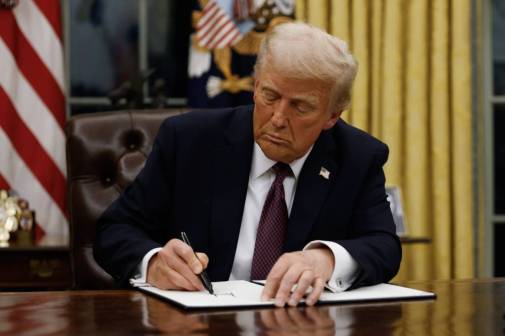New website catalogs states’ digital-transformation executive orders

The Digital Service Network at Georgetown University’s Beeck Center for Social Impact and Innovation on Thursday published a new website that provides an overview of governors’ executive orders aimed at digital transformation.
The new website includes a data dashboard and database of executive orders. It compiles and analyzes executive orders spanning the last decade. Users can search the orders by group or filter them by state or territory, year of enactment or topic. The group also highlighted a handful of executive orders that represent bold action, such as Pennsylvania Gov. Josh Shapiro’s order creating the Commonwealth Office of Digital Experience.
Researchers at the Digital Service Network determined that 84% of states or territories have enacted at least one executive order related to digital transformation since 2013.
Colleen Pulawski, the Digital Service Network researcher who led the project, said there’s a lot of variance in what states call “digital transformation.” She borrowed a definition from the consulting firm Public Digital: “applying the tools, culture and processes of the Internet era to the operations and delivery of government services.”
“There’s a big spectrum, from the transitioning of paper-based forms into digital formats, to the automation of decision making for social safety net services, to thinking about security or overhauling legacy systems to be more up to date with modern standards,” Pulawski told StateScoop.
Of the 134 digital transformation executive orders signed since 2013, the Digital Service Network determined that cybersecurity and information technology were the most common topics. Broadband, websites and interoperability were the next three most common topics. As for trends in digital transformation, Pulawski said that across the country, the actions seemed to not adhere to political or geographic lines.
“I think maybe going into the scan, maybe we would have had hypotheses that we would have seen stark differences regionally,” Pulawski told StateScoop. “But at least at a very high level, with the EO database, we’re not seeing that. We’re seeing broad action on digital across the vast majority of states and territories, regardless of region. And we’re seeing a lot of commonalities.”
That volume of action is why, Pulawski said, her organization focused on executive orders. As part of the announcement, the Digital Service Network highlighted five orders that are of interest because of their broad executive actions on digital transformation. Pulawski said the five highlighted orders “pursue cross-cutting, far-reaching administrative activity that will shape efforts to digitally transform government operations and services.”
One of the highlighted orders is Pennsylvania Gov. Josh Shapiro’s April executive order that created CODE PA, a dedicated team to modernize the state’s services. Pulawski said this action was compelling because of its holistic approach and enablement of broad action, such as a project to overhaul permit refund processes for several departments.
“We think that’s really exciting and are super eager to follow, in particular, how these kinds of more generalized, broad mandates and broad policies translate into implementation,” she said.
However, Pulawski said, executive orders alone do not provide a comprehensive overview of all state-level digital transformation policies. Some states, such as Colorado, have established digital services teams without the use of executive orders.
The group plans to regularly update the tool as governors issue new executive orders. Pulawski said it also plans to soon release legislative and administrative policy scans to showcase the various approaches to digital transformation that are occurring across states and territories.
“What we’re really excited about looking ahead is that once we’ve scanned all of these policy tools, then we can really start to dig in on research that will allow us to develop clear and actionable guidance for policymakers and practitioners alike on the relative affordances and limitations of various policy tools, in particular state level contexts, in advancing particular digital transformation goals,” she said.






